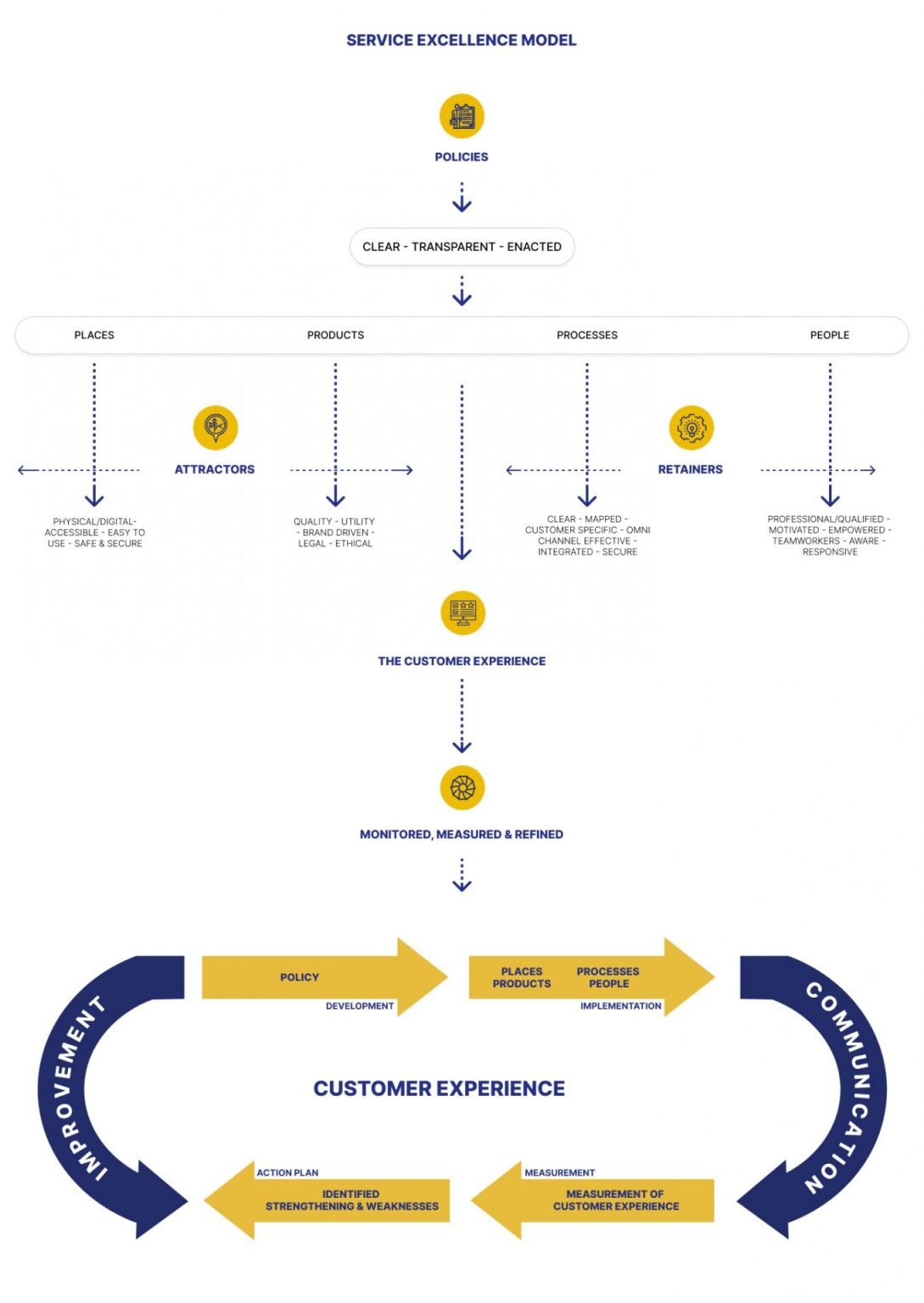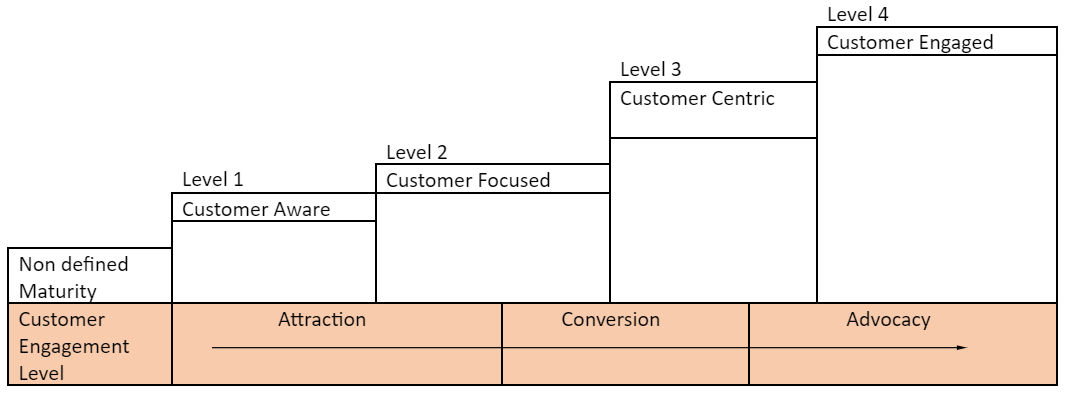Digital Channels Customer Experience Framework DCXF2024
DCXF2024 reflects the increased international growth in scale, reach and scope of digital transformation and services delivered through Digital Channels.
The primary aim of the DCXF2024 Framework is to motivate organisations to focus their attention on the Digital Customer Experience through the delivery of service excellence techniques.
The new DCXF2024 framework has taken into consideration the evolution of digital services offerings including online, mobile, mobile apps, cloud services, omni channels, AI, IOT and other digital delivery technologies.
It is designed to assist all organisations of all sizes in both the public and private sectors improve the delivery of their Digital channels customer experience and offers the opportunity of 3rd party Accreditation by The International Customer Experience Institute (ICXI).
This new framework contains, the proven core principles of Customer Experience and combines these with key Customer User Experience (UX) and digital experience considerations and measurables to create a flexible yet quantifiable framework for implementing all elements to facilitate delivery of Digital Service Excellence and a consistently positive customer and user experiences.
DCXF ELEMENTS
Policies
Do the Policies enable and set out the parameters for the Products / Digital Services, Digital Channels, Processes and People and set the framework and priorities for the allocation of resources to deliver service excellence and excellent user experience?
Places – Digital Channels
Are the digital portals, mobile apps, online platforms etc. the ways by which the customer chooses to access the organisations services designed according to the quality, resilience and robustness needs and expectations of the customer?
Products / Services – Physical Services
Are the quality performance of products / services fit for purpose and consistent with prevailing Digital performance expectations or recognised norms?
Processes & Customer Journey Maps
How effective are the organisation’s processes in delivering the desired outcome to customers and users across all services? Is the customer experience end to end journey maps defined and measured?
People
Are the employees sufficiently skilled and motivated to ensure products and services deliver to customer and user needs? Does the organisation take employee needs and happiness into consideration when analysing and developing the customers journey? Does the whole organisation function as one team?
Measurement of Performance
Definition and implementation of performance measurement across all the digital services will identify the strengths and weakness before they become major issues and provide foundations for customer experience service excellence and employee happiness.
Performance Results
How the research and other related performance measures conducted identifies the levels of happiness and satisfaction of customers / users and employees.
DCXF Implementation Process
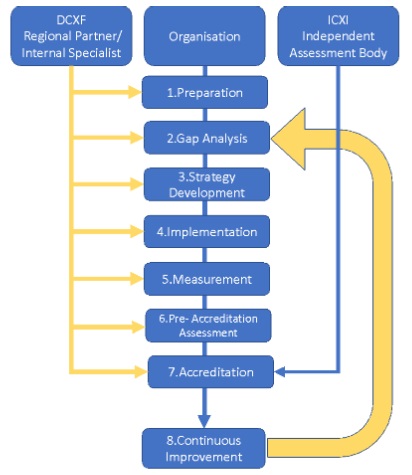
Online Assessment – Scoring model for DCXF2024
Criteria
Available Points
Policies
100
Places – Physical Channels
100
Products / Services – Physical Services
150
Processes & Customer Journey Maps
200
People
100
Measurement of Performance
250
Performance Measurement Results
100
Total
1000
Performance Levels for Accreditation
Performance
Level of Excellence
Achieved 90%+ of Requirements
Transformational Leading Organisation
Achieved 75% to 89.9% of Requirements
Practice Expert Organisation
Achieved 55% – 74.9% of Requirements
Pioneering Professional Organisation

6D – Performance Improvement Model
Using the 6D Performance Improvement model for CX Implementation
The 6D Model is designed to be used by any organisation striving for effective and efficient management of their customer experiences. Effective customer engagement results from gaining a clear understanding about what is important to customers, and the well-defined internal alignment of the organisation’s capabilities to deliver consistently high standards of performance.
The Model places customers at the core of organisations’ business operations. It is a diagnostic, development, planning, implementation, and assessment tool designed to facilitate continuous performance development.
The 6D Performance Improvement model, represented as an infinity visual, is a step-by-step non-restrictive approach that seeks to assist organisations to develop a continuing improvement process within each of the 5P’sModel criteria of the DCXF2024 Framework.
Organisations should use this 6D PIM as a guide to interrogate and analyse wherein these areas there is scope for improvement. The model is composed of six dimensions that are closely integrated and linked, 3 of these are categorised under ‘Importance’ and 3 are under ‘Performance’.
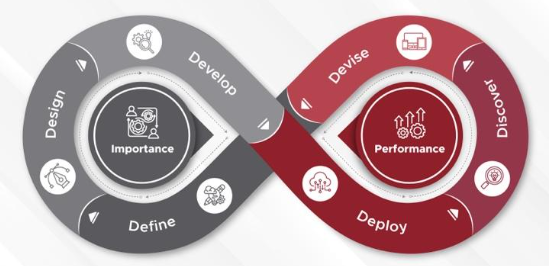
The Six Dimensions of Implementation Model
The model, represented as an infinity visual, is a step-by-step non-restrictive framework that seeks to assist organisations to develop a continuing improvement process within each of the five dimensions of the ICXI 5P’s Customer Experience Management Model.
Organisations can use it as a guide to interrogate and analyse wherein these areas there is scope for improvement. The model is composed of six dimensions that are closely integrated and linked, three of these are categorised under ‘Importance’ and three are under ‘Performance’.
The 6 Dimensions
The ‘Importance’ dimensions cover how an organisation understands its customer and market needs and expectations to align and develop the organisation to fulfil them. The ‘Performance’ dimensions are how the organisation delivers the developed experiences and continuously analyses voice of customer feedback to innovate and improve experiences.
The infinity starts at the “Define” dimension and is a continuous dynamic loop of analysis development delivery and measurement.
The dimensions of the Model answer the fundamental questions surrounding customer experience management.
Define
What do customers expect?
Design
What experiences can be delivered?
Develop
How will it be achieved?
Deploy
How will it be implemented?
Discover
Has it worked?
Devise
What innovations are required?
Each of the elements of the six dimensions has a definition to explain its objective (objective statement); the definition is then followed by a detailed explanation that describes the expected activities that lead to its achievement (maturity indicators).
AIMS
The simple aim of the model is to help organisations to better understand what is important to their existing or target customers and to measure their performance in those key areas. The performance gaps providing the content for a performance improvement programme that becomes an ongoing contributor to the development and maintenance of competitive advantage and customer loyalty.
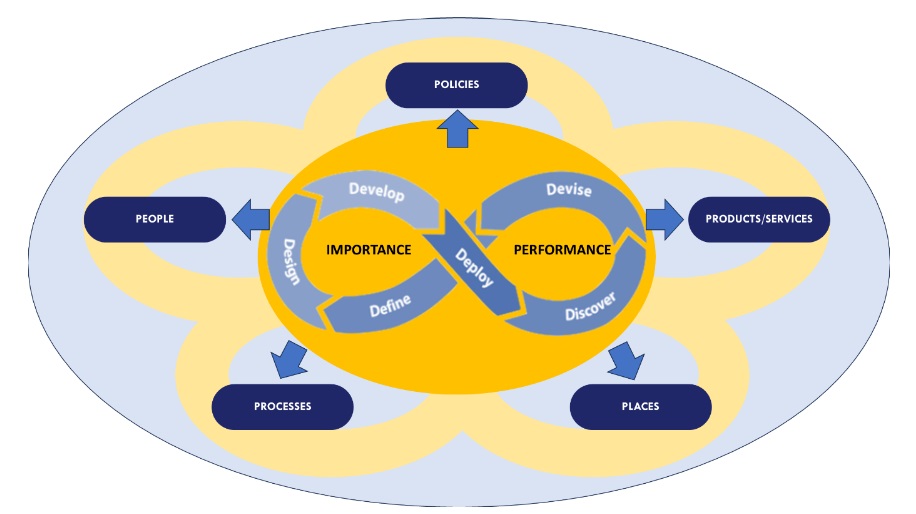
6D Model – Maturity Scale
The maturity scale concept is an implementation target and assessment methodology that allows organisations to determine their present status versus their targeted maturity objective and plan the work towards its achievement.
This 6D Model maturity is based on a maturity categorisation aligned with other global maturity scales and models.
Organisations can conduct a detailed comprehensive review and assessment to analyse the present maturity status within each of the dimensions and elements within it.
Assessment using the Maturity Scale
The ICXI 6D Model maturity scale is an assessment approach that organisations striving towards customer engagement use to determine their maturity level of their customer experience strategy.
The assessment scoring can also be used by organisations conducting self-assessment and seeking benchmarking with others.
All of the elements within each of the dimensions have its own score. By reviewing the individual level of each element, the organisation can identify areas of strength and weakness and develop an improvement plan to prioritise actions designed to reinforce areas of strength and address areas of weakness.
The underlying scoring system of the maturity scale is based on the six dimensions of the Model weighted according to the relative importance of its components.
There are 1,000 points distributed among the 6 dimensions of the Model.
40% of the assessment scoring is based on the Importance dimensions and 60% are allocated to the Performance dimensions.

